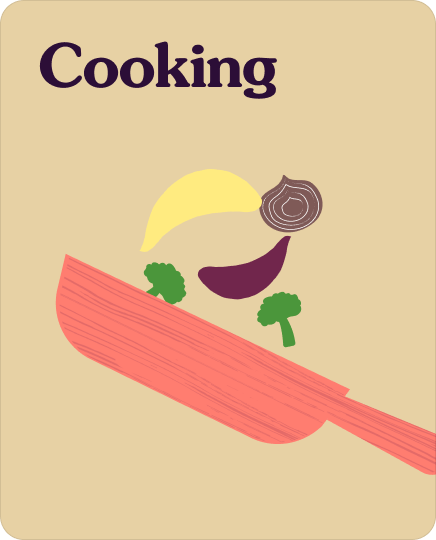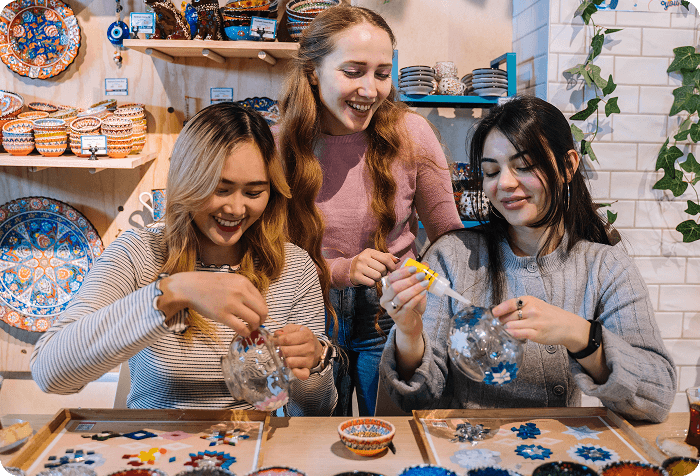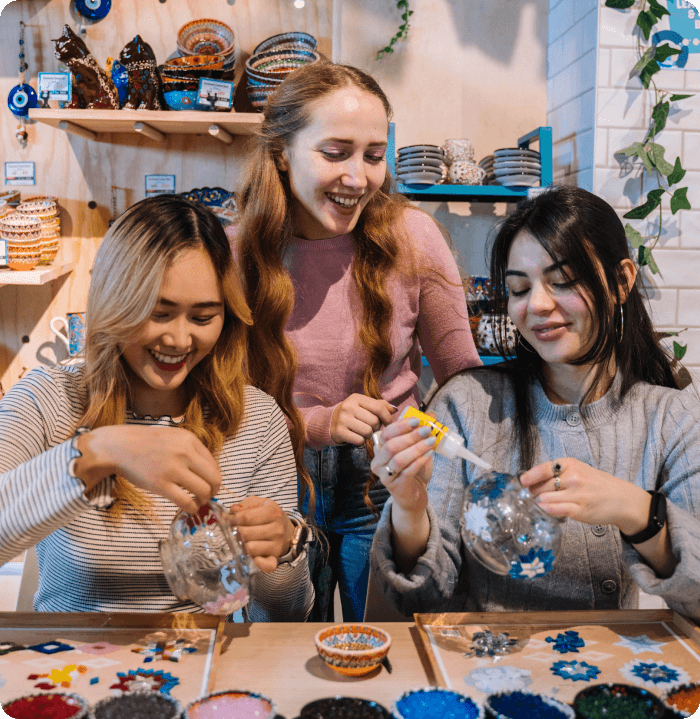In this story:
Thinking of trying pottery classes in Sydney? Get the lowdown on DIY ceramics and learn everything there is to know about this ancient craft. These fun facts about pottery aren't just good boredom busters, they'll help you feel confident and ready for your first pottery class. Designed for complete beginners, pottery workshops are a great way to learn tips and techniques for making your own ceramics in a supportive and inviting environment. Under the guidance of friendly local potters, you can indulge your creativity and transform a block of clay into anything from a teapot to your new favourite bowl. These pottery studios in Sydney offer a calming space where you can enjoy a creative form of meditation as you move with the rhythm of the pottery wheel or methodically knead and shape your clay.
To help you get started before booking your first pottery class for beginners, here's everything you need to know about this tactile and trendy craft in 2025!
The ancient art of pottery
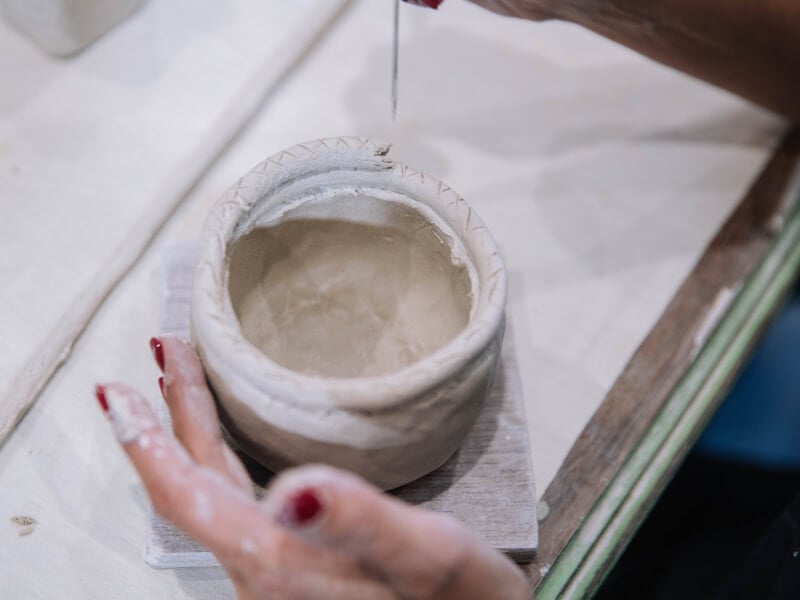
Before we dive into the history of pottery, let's briefly cover what pottery is. Pottery is both the action of making clay objects and the clay objects themselves. So you can do pottery and sell pottery. It's been around for a long time, and the pottery uncovered from excavations has inspired artisans worldwide. To this day, the manufacture of pottery continues to follow a legacy of human ingenuity and artistic flair, beginning with those ancestors thousands of years ago. Potters (those who make pottery) have the opportunity to indulge in art therapy, express themselves, reconnect with nature and work against a commercial mass production cycle that has ultimately seen us detach ourselves from the everyday objects we use.
History of pottery
The manufacture of clay bowls, baskets and pots first began in Asia, dating back to 14,000 BC. During the Stone Age, years later, the production of cooking pots was a reasonably simple process, requiring clay and a source of heat. Much of the Chinese pottery during this time used earthenware methods, firing pots in bonfires for short periods of time. These bonfires could climb up to almost 900 degrees Celsius! Eventually, this art made its way around the world, gaining popularity and influence in Africa and Japan, where clay objects assisted farmers in practices such as grain storage.
The practical trend was boosted during the Bronze Age when the introduction of the fast potter’s wheel dazzled artisans. Surpassing its slow predecessor, the efficient pottery wheel spun on an axel base, producing a pot per minute. The emergence of technologies in smelting and metallurgy contributed to the range and quality of pottery.
Types of pottery
Pottery has undergone countless transformations over the course of history. Long gone are the days when potters smeared clay around the insides of baskets and left objects out for the slow sun-drying. The 20th century has seen a mass production of pottery, using a ‘jollying’ technique which has been described by some as a sort of mechanical adaptation of wheel throwing. Fired in a tunnel kiln after automatic drying, pottery transforms into deep reds, grey and blacks after the oxidation of chemicals. The three basic types of pottery—earthenware, stoneware and porcelain, with their clay and firing variations, have been updated with ingenious and creative methods.
Ceramics
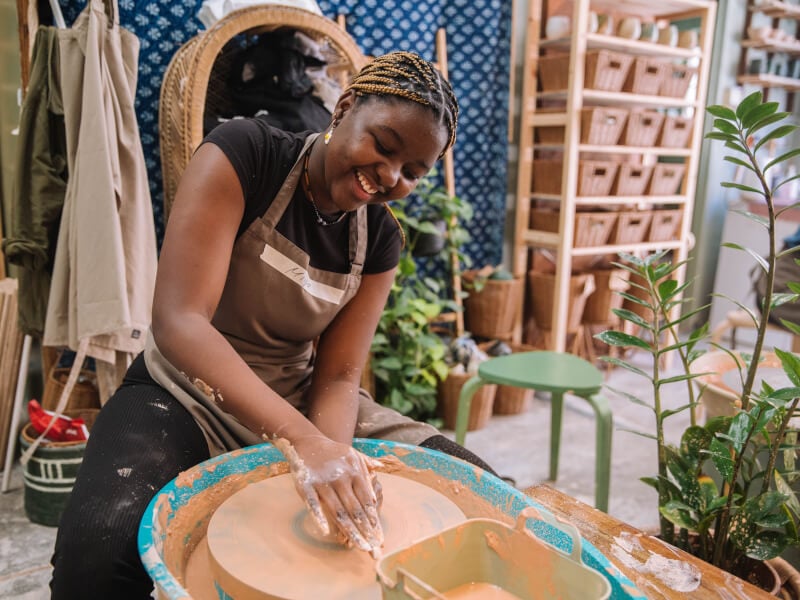
Though the original use of the term 'ceramics' referred to clay objects fired in a kiln, a wide variety of materials, including glass and cements, now fall under the term. Unlike the broader term 'pottery', which refers to functional pots and dishes, 'ceramics' can be used to refer to fine art pottery—clay objects that have a decorative function.
Interested in learning how to make your own ceramics? Get behind the wheel at a clay and sip wheel throwing class with Print Paint Pot where you’ll learn how to make a beautiful ceramic piece. Or get creative with clay at a clay hand building class with Clay Cartel in Marrickville and learn how to make and paint your own ceramic bowls, plates or pots.
Whatever you choose, learning how to make ceramics is a great option if you’re looking for a fun and hands-on activity. Enjoy a few hours of clay play and watch all stress melt away!
Slip
Slip, made from different coloured clay, is thin and easily applied to ceramics as a means of decoration. Liquid slip can be brushed, sprayed and layered on to create intricate designs. The earliest forms in Ancient Egypt were animal and scenic motifs painted in a white slip on a red body. During the 17th and 18th centuries, English slipwares feature yet another variation of slip design, using dotted and trailed patterns.
Decoration

Pottery is not limited to practicality but has served as an artistic expression of identity for Greek, Asian and Egyptian cultures across history. Ancient Greek vases are known for depictions of the daily lives of people and stories of gods and goddesses.
Make your ceramics stand out at this pottery painting class in Burwood! In this hands-on workshop, you’ll learn how to decorate your own ceramic pieces with a design of your choice. The ceramic pieces are already made for you so it's the perfect introduction if you're not ready to dig your hands into clay yet but still want some bespoke items for your home.
Sgraffito
Sgraffito, which literally translates to ‘scratch’ in Italian, involves a technique of scratching through layers of wet paint to reveal a hidden layer. With roots in the Middle East, patterns were incised by potters through a slip layer, resulting in a scratched aesthetic. A multitude of tools can be used for sgraffito, including anything from a painting knife to a fingernail.
By applying a small amount of pressure with a chosen tool, potters can expose underlying coloured clay to produce a pattern. Once the top layer has dried, creators can add yet another layer to scratch through, to produce beautiful multi-coloured designs. Stiff bristled brushes are used to clear slip crumbs and sharpen edges.
Carving
Slip carving utilises knife carving to achieve a raised design in slip. Both low and high relief can be achieved with the appropriate technique. Removing clay to add light and shadow can produce an illusion of depth across the object's surface. Applying further high relief creates an aesthetic of detachment from background space.
On the search for more unique things to do in Sydney? Make your own kurinuki pottery cup in Hornsby. Transform clay into art using ancient Japanese techniques. You’ll also discover how to embrace spontaneity and imperfection.
Glazing
Dipped, poured, sponged or sprayed, glazing pottery ensures a waterproof and food-safe sealed coating and adds vibrancy to designs. There are a variety of glazes, which all interact with clay materials differently, including gloss glaze to achieve a shiny and reflective surface. Interested in trying some of these different types of pottery? Discover the different types of pottery in Sydney here.
Earthenware

Made with a mixture of clay and water, earthenware marked the beginning of the pottery timeline. Distinct in deep reds, greys and blacks, this pottery has populated many kitchens where its heat and cold-proof material is ideal for cooking, freezing and serving.
Fired at the lowest temperature of all pottery types, earthenware is porous and easily scratched. Though thin, it is comparably weaker than its porcelain cousin. The most famous example of fine art earthenware is the Chinese clay warriors of the Terracotta Army, though the category encompasses a long line of Chinese and Japanese ancient pottery (16th century) and a century later across Europe.
Stoneware
Implied by its name, stoneware is dense, opaque and impermeable. Coloured light-brown or buff after firing, these clays are used for both commercial ware and fine art. Stoneware has undergone many changes since its first use in the 15th century during the Shang Dynasty art era in China, including a salt-glazed form in England two centuries later and black stoneware or ‘basalts' in the 18th century.
Porcelain
In Sui Dynasty China, the beginnings of porcelain eventually influenced pottery across Asia. Covered in glaze, the cups and pitchers had a white and shiny aesthetic and around about the 1200 AD mark, these coloured glazes permeated Europe.
Other than its defining ringing tone when tapped or translucence under light, porcelain does not differ significantly from stoneware. Originating as early as 200 BC, Chinese potters used white china clay and feldspathic rock to create an object which would eventually influence potters all across Europe.
DIY pottery versus mass-produced
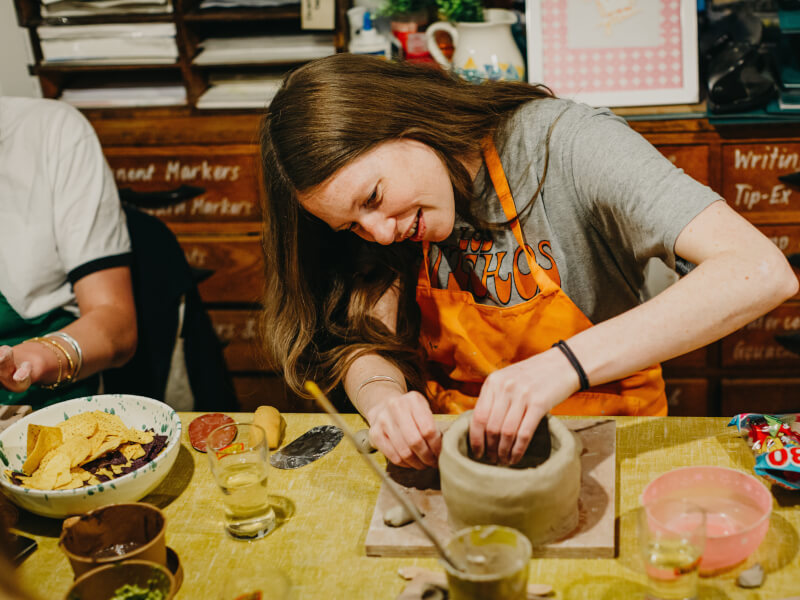
When looking to decorate your home, it's easy to glide your mouse over ‘eclectic blue vases’, ‘weathered white stone’ or a hoard of imported ceramics at Pottery Barn. More satisfying and economical, however, is to get your hands dirty and make your own!
Creating your own household pottery is a therapeutic journey to forming a deeper appreciation for nature and injecting your own personality while saving a significant amount of money. Producing your own DIY homewares can be deeply satisfying in a world where mass production results in detachment and indifference to the labours of artisans.
Pottery creation allows creative expression, improved focus and time to de-stress and socialise with like-minded people. Promote joint movement and dexterity by exercising hands, wrists and arms, and align yourself with ancient citizens by continuing a trend dating back thousands of years.
For those aspiring pottery makers with children, why not bring them along? Pottery is great for motor skill development, tactile therapy, discipline, creative expression and pride that comes from the accomplishment of transforming something raw into a solid creation. Plus, there are plenty of pottery classes in Sydney that are kid-friendly!
Wheel throwing vs. hand building
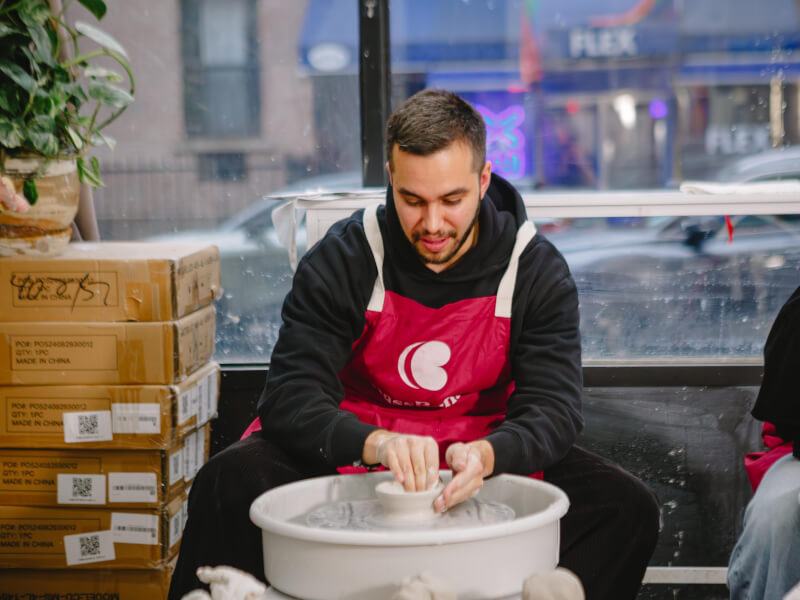
If you're new to pottery, one of the first choices you'll come across is whether to try wheel throwing or hand building, and both offer unique creative rewards. Wheel throwing is that mesmerising method where a lump of clay is centred on a spinning wheel and shaped using your hands and a few simple tools. Think of the classic bowl or vase, you’ll use steady hands and a little pressure to coax the clay into beautiful symmetrical forms. It’s rhythmic, a little meditative and a great way to learn about balance and control.
Hand building, on the other hand, is exactly what it sounds like—using your hands (and often some basic tools) to shape clay without the use of a wheel. This technique includes pinch pots, slab building and coiling, and is perfect if you’re keen to explore quirky, organic shapes or textured finishes. You’ll often have more freedom with form, making it ideal for sculptural pieces or personalised pottery that embraces a bit of wonky charm.
Both methods are beginner-friendly and offered in pottery classes across Sydney. Whether you're drawn to the spinning rhythm of the wheel or the slow, mindful process of building with your hands, you're sure to find a pottery style that suits your vibe. Why not try both at Klaypots Studio in Crows Nest and see where your creativity takes you?
Get started with a beginner’s class
Wondering how to do pottery? Head to a beginner’s pottery course in Sydney and get behind your first pottery wheel. Guided by Yegana, founder of Silky Shapes Pottery Studio, you'll learn the art of wheel throwing and how to trim and glaze cylinders in a generously timed class. Experiment with themed designs and walk away with three objects, from bowls and mugs to vases and stationery holders. Or combine clay and a glass of wine at Print Paint Pot's clay and sip wheel throwing class. Perfect for a casual introduction to pottery.
There are a variety of classes on offer, from introductory workshops to specialised workshops in wheel throwing and teapot making. Whatever you decide, you'll be able to find like-minded pottery enthusiasts, boost your confidence and leave your pottery class with your very own creation.















